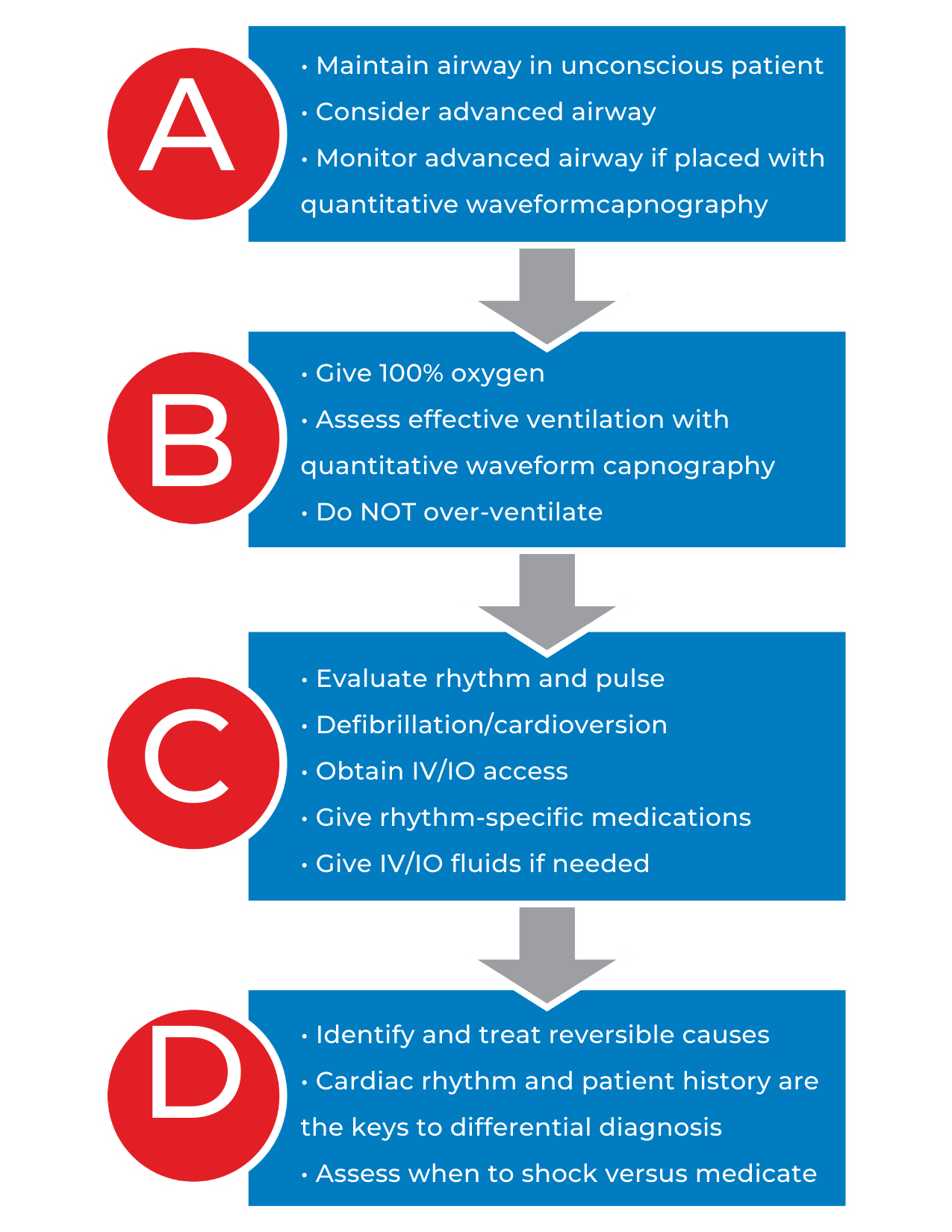ABCD’s of ACLS
Airway
Maintaining an open airway is crucial. It is the provider’s decision as to whether the patient will benefit more from an advanced airway at the risk of interrupting CPR. If the individual is capable of raising his or her chest without the use of the advanced airway, then do not pause CPR. However, if you are in a hospital or near trained professionals who can efficiently insert and use the airway, consider pausing CPR for a maximum of 10 seconds.
Breathing
One hundred percent oxygen should be delivered in cases of cardiac arrest. Blood O2 saturation must be greater than or equal to 94%, and a pulse oximeter must be used to measure this. Quantitative waveform capnography should be used whenever possible. The partial pressure of CO2 at a normal state is 35 to 40 mmHg. A ETCO2 of

Figure 9
10 to 20mmHg must be produced by high-quality CPR. You can consider pausing attempts at resuscitation only if the ETCO2 reading after 20 minutes is less than 10mmHG for an intubated patient.
Circulation
Obtain intravenous (IV) access when possible. However, if after two unsuccessful attempts, go straight to intraosseous access (IO). Monitor blood pressure with a blood pressure cuff or intraarterial line if available. Monitor the heart rhythm using pads and a cardiac monitor. When using an AED, follow the directions (i.e., shock a shockable rhythm). Give fluids when appropriate. Use cardiovascular medications when indicated.
Differential Diagnosis
In diagnosing, it’s always better to assess the likeliest causes before addressing the least likely causes. Stop CPR only to confirm a particular diagnosis; otherwise, it is critical to keep interruptions at a minimum.
